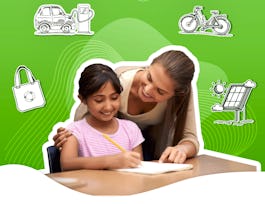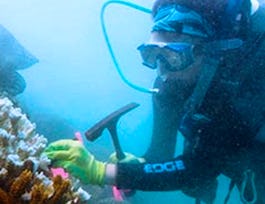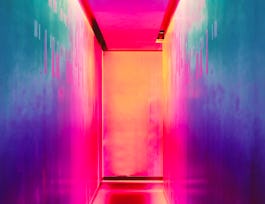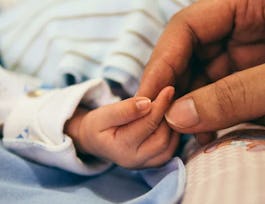This course takes a detailed look at the remarkable changes unfolding in the Arctic environment, including the shrinking Arctic sea ice cover, shrinking land ice, thawing permafrost and cascading impacts on Arctic ecosystems. After a review of Arctic climates of the past, attention turns to the possible future of the Arctic’s climate and environment.



Polar Peril
Ce cours fait partie de Spécialisation Arctic Meltdown

Instructeur : Mark C. Serreze
Inclus avec 
Ce que vous apprendrez
Identify the rapid environmental changes unfolding in the Arctic, the processes underlying these changes, and how they are related to each other
Evaluate and critique the evidence for past climate changes in the Arctic and projections of change through the 21 st century
Compétences que vous acquerrez
- Catégorie : Environmental Studies
- Catégorie : arctic sustainability
- Catégorie : oceanography
- Catégorie : atmospheric science
- Catégorie : Climate Change
Détails à connaître

Ajouter à votre profil LinkedIn
5 devoirs
Découvrez comment les employés des entreprises prestigieuses maîtrisent des compétences recherchées

Élaborez votre expertise du sujet
- Apprenez de nouveaux concepts auprès d'experts du secteur
- Acquérez une compréhension de base d'un sujet ou d'un outil
- Développez des compétences professionnelles avec des projets pratiques
- Obtenez un certificat professionnel partageable


Obtenez un certificat professionnel
Ajoutez cette qualification à votre profil LinkedIn ou à votre CV
Partagez-le sur les réseaux sociaux et dans votre évaluation de performance

Il y a 5 modules dans ce cours
The Arctic is home to some of our planet's most visible indicators of climate change and we'll learn all about them in this module. Notable among these are the shrinking Arctic sea ice cover and the stronger warming of the Arctic compared to the rest of the globe, a phenomenon known as "Arctic Amplification". We'll then look at how the Arctic permafrost - perennially frozen ground - is warming and thawing. Finally, attention will turn to a direct threat to Arctic residents - coastal erosion and how it is tied to sea ice loss, ocean warming and warming permafrost.
Inclus
5 vidéos1 devoir
The Arctic is home to the Greenland ice sheet, one of the planet's two ice sheets (the other is the Antarctic ice sheet) as well as many ice caps and glaciers. With few exception, these ice bodies are losing mass and contributing to sea level rise. Here we'll learn all about the Arctic's shrinking land ice, including the complexity of processes affecting the mass balance of the Greenland ice sheet, and the sad story of the disappearance of the two small ice caps that your instructor studied back in the early 1980s.
Inclus
4 vidéos1 devoir
Here, we'll discover how changes in the Arctic are having cascading effects not just within the Arctic, but beyond the region. There is is evidence, albeit still controversial, that the strong warming of the Arctic, known as Arctic amplification, can influence weather patterns in middle latitudes. We'll see that the Arctic itself is experiencing extreme weather events. We'll also explore how treeless, windswept tundra is being taken over by shrubs, and how the loss of sea ice is is having impacts cascading through the marine food chain from phytoplankton to top predators like the polar bear.
Inclus
4 vidéos1 devoir
A key part of understanding recent climate change in the Arctic, as well as where the Arctic may be headed, is to understand climates of the past - the realm of paleoclimatology. Here, we'll learn about the science of paleoclimatology, different types of paleoclimate data and some of the causes of past climate changes. The Arctic turns out to be a rich course of paleoclimate data. Then we'll focus on climates from the past million years up to the modern period, noting the tremendous changes that have occurred in the Arctic and elsewhere, setting the stage for a peek into the future.
Inclus
4 vidéos1 devoir
This week, we'll first learn that while climate models are a key tools for making projections about the future Arctic, they also have biases and uncertainties. We'll then take a look at projected changes in temperature, precipitation and sea ice. We'll see that the Arctic is expected to continue to warm more strongly than the rest of the planet, that Arctic precipitation is likely to increase and that the sea ice cover will continue to shrink. However, it will also become clear that the magnitude of these changes will very much depend on human behavior - specifically, future rates of fossil fuel burning. Finally, we'll look at the permafrost carbon feedback, and its potential to lead to further warming of the planet.
Inclus
4 vidéos1 devoir1 sujet de discussion
Instructeur

Offert par
Recommandé si vous êtes intéressé(e) par Environmental Science and Sustainability

Banco Interamericano de Desarrollo

American Museum of Natural History

Institute for the Future

University of Colorado Boulder
Pour quelles raisons les étudiants sur Coursera nous choisissent-ils pour leur carrière ?





Ouvrez de nouvelles portes avec Coursera Plus
Accès illimité à plus de 7 000 cours de renommée internationale, à des projets pratiques et à des programmes de certificats reconnus sur le marché du travail, tous inclus dans votre abonnement
Faites progresser votre carrière avec un diplôme en ligne
Obtenez un diplôme auprès d’universités de renommée mondiale - 100 % en ligne
Rejoignez plus de 3 400 entreprises mondiales qui ont choisi Coursera pour les affaires
Améliorez les compétences de vos employés pour exceller dans l’économie numérique
Foire Aux Questions
Access to lectures and assignments depends on your type of enrollment. If you take a course in audit mode, you will be able to see most course materials for free. To access graded assignments and to earn a Certificate, you will need to purchase the Certificate experience, during or after your audit. If you don't see the audit option:
The course may not offer an audit option. You can try a Free Trial instead, or apply for Financial Aid.
The course may offer 'Full Course, No Certificate' instead. This option lets you see all course materials, submit required assessments, and get a final grade. This also means that you will not be able to purchase a Certificate experience.
When you enroll in the course, you get access to all of the courses in the Specialization, and you earn a certificate when you complete the work. Your electronic Certificate will be added to your Accomplishments page - from there, you can print your Certificate or add it to your LinkedIn profile. If you only want to read and view the course content, you can audit the course for free.
If you subscribed, you get a 7-day free trial during which you can cancel at no penalty. After that, we don’t give refunds, but you can cancel your subscription at any time. See our full refund policy.

